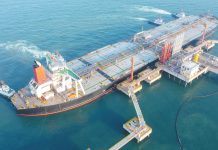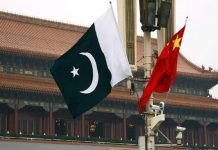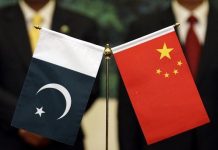
The much-anticipated Legoland Shanghai Resort, the first of its kind in China and the world’s largest version of the popular theme park, commenced its public operations on July 5. In August, the resort attracted nearly 300,000 visits with its eight immersive themed areas providing interactive rides, shows and attractions.
Danish toymaker Lego Group has been exploring the Chinese market for decades, and currently has nearly 500 retail stores in more than 100 cities across the country. The Shanghai resort is a joint venture between British entertainment group Merlin Entertainments, which runs Legoland parks around the world, Denmark’s Kirkbi A/S, the parent company of Lego Group, and Chinese investors. It is the world’s 11th Legoland Resort.
Located in Fengjing Town in Jinshan District, the 32-hectare resort is specifically designed for families with children aged 2 to 12. It showcases thousands of Lego models constructed from more than 85 million Lego bricks.
Nearly 80 percent of tourists visiting the resort are from Shanghai and surrounding areas in Zhejiang and Jiangsu provinces. Activities at the resort include rollercoasters, jet skiing and boat building competitions, and children can obtain their “driver’s licenses” or take part in challenges.
Chen Jie, General Manager of Legoland Shanghai Resort, told Beijing Review that it took two years for the design team to collect suggestions from consumers to tailor the resort to the preferences of its target demographics. “The resort has blended themed areas with Chinese cultural elements to resonate with domestic tourists,” she said.
A Chinese vibe
According to Chen, the resort has introduced the world’s first water-town-style boat tour. The tour takes visitors through miniature versions of the traditional water towns of the region south of the lower reaches of the Yangtze River, as well as modern Shanghai cityscapes, all made from Lego bricks 25 times the usual size.
The resort also launched the world’s first Lego Monkie Kid-themed land. Monkie Kid is a Lego theme inspired by the fictional character Sun Wukong, also known as the Monkey King, from the 16th-century Chinese novel Journey to the West. The area’s flagship attraction, Flower Fruit Mountain Adventure, combines elements from the story with Lego elements to create an immersive experience.
“We have also replicated different cities in China using Lego bricks in the indoor Miniland,” Chen said. Inside Miniland, a miniature world built from more than 20 million Lego bricks, visitors can explore famous landmarks of different cities, like the Shanghai Tower, China’s tallest skyscraper, or the Palace Museum (Forbidden City) in Beijing.
The city models also showcase traditional Chinese festivals using the Lego characters, which participate in dragon boat races during the Dragon Boat Festival, usually falling in June, or hold Chinese-style wedding ceremonies on Qixi Festival, also known as Chinese Valentine’s Day, usually celebrated in August.
In January, Lego Group launched a festive event in Shanghai’s iconic tourist attraction Yuyuan Garden. The lanterns showcased at the event were inspired by the Lego Spring Festival sets that were released for the Year of the Snake (January 29, 2025-February 16, 2026). The Spring Festival is also known the Chinese New Year, and the snake is the sixth of the 12-year cycle of animals in the Chinese zodiac, with the others being the rat, ox, tiger, rabbit, dragon, horse, sheep, monkey, rooster, dog and pig.
In each of the annual Lego Spring Festival sets, there is a Lego mini-figure dressed in a Chinese zodiac animal costume. The sets are designed to get the whole family involved in the building process, in line with the Chinese custom of family reunions during the festival, according to the company.
In China, for China
After 38 years in China, French industrial conglomerate Schneider Electric has transformed its presence in the country, its second largest market globally, from a manufacturing base into a vital center for innovation and manufacturing.
“China has evolved from being just a manufacturing base to becoming a source of innovation for Schneider Electric globally. Increasing innovations developed in China are being adopted across our global operations,” Mao Feifei, General Manager of Schneider Shanghai Industrial Control Co. Ltd., told Beijing Review.
The company has established a comprehensive operational network in China, with 23 factories, seven logistics centers and five research and development (R&D) centers located in Beijing, Shanghai and other cities. China is now one of the company’s four global R&D hubs.
Schneider Electric’s Shanghai facility has been recognized as an end-to-end “lighthouse factory” by the World Economic Forum, for its adoption of cutting-edge technologies such as big data, 5G and AI, boosting productivity and improving
product quality.
At the lighthouse factory in Shanghai, Schneider Electric employs a human-machine-intelligence collaborative model. “Although the site has an automation rate of 74 percent and uses more than 100 robots, the company aims not to replace humans but to empower manufacturing with automation,” Mao said.
Green practices are increasingly becoming part of the company’s operations. In the second quarter of this year, Schneider Shanghai helped its global clients save and avoid emissions of over 700 million tons of carbon dioxide. The Shanghai plant sources 30 percent of its electricity from solar energy.
According to Mao, Shanghai offers unique advantages in terms of supply chain efficiency, talent attraction and governmental support. “The open and transparent business environment here continues to create opportunities for innovation and growth,” he said.
Serving as a bridge
Foreign-funded enterprises and institutions with a firm footing in China are serving as connectors, supporting Chinese enterprises to expand overseas.
In the January-May period this year, Shanghai added 2,500 new foreign-invested companies and its paid-in foreign direct investment exceeded $7.6 billion, according to the Shanghai Municipal Government.
In 1981, global accounting and consulting firm Ernst & Young (EY) became one of the earliest international professional service organizations permitted to operate in the Chinese mainland.
“China is a key market for EY’s global clients. Their investment in China, with its innovation and market dynamism, can benefit their global strategy,” Bertrand Régnier, a partner at EY, told Beijing Review.
EY has been supporting Chinese enterprises to take their business global. Lu Chen, EY China Overseas Investment Network Global Tax Leader, told Beijing Review that the most important driver for Chinese companies to expand overseas is their improving global competitiveness. Chinese companies are transitioning from suppliers of low-value-added products to exporters of technologies, brands and services.
“A growing number of Chinese enterprises are exploring overseas markets for new growth opportunities, or diversifying their industrial chains to hedge against geopolitical risks,” Lu said. According to him, EY provides planning, launch and management services for outbound investments of Chinese enterprises.
In 2007, Standard Chartered Bank (China) Ltd. was one of the first locally incorporated foreign banks in the Chinese mainland, and now has one of the largest networks of any foreign bank in China, with over 100 outlets across about 30 cities.
According to Yang Jing, Deputy President of Standard Chartered China, the bank’s global network covers more than 75 percent of the markets in countries participating in the China-proposed Belt and Road Initiative (BRI), which aims to boost connectivity along and beyond the ancient Silk Road routes and spans over 150 countries. Its wide international network has placed Standard Chartered in a position to create close connections between Chinese businesses and overseas markets and international institutions.
Over the past five years, Standard Chartered has supported more than 720 BRI-related projects, providing funds totaling $130 billion. Last year alone, the bank participated in over 200 overseas projects of Chinese enterprises, covering sectors including clean energy and electric vehicles.
“We tailor financial solutions based on the features of different industries in their global expansion,” Yang told Beijing Review.
To address challenges commonly faced by Chinese enterprises abroad, Standard Chartered has established teams in over 20 countries to provide consulting services on local laws and help mitigate foreign exchange rate risks.
Yang said Standard Chartered remains confident as China opens up its financial sectors and will continue to tap into the Chinese market. –The Daily Mail-Beijing Review news exchange item





